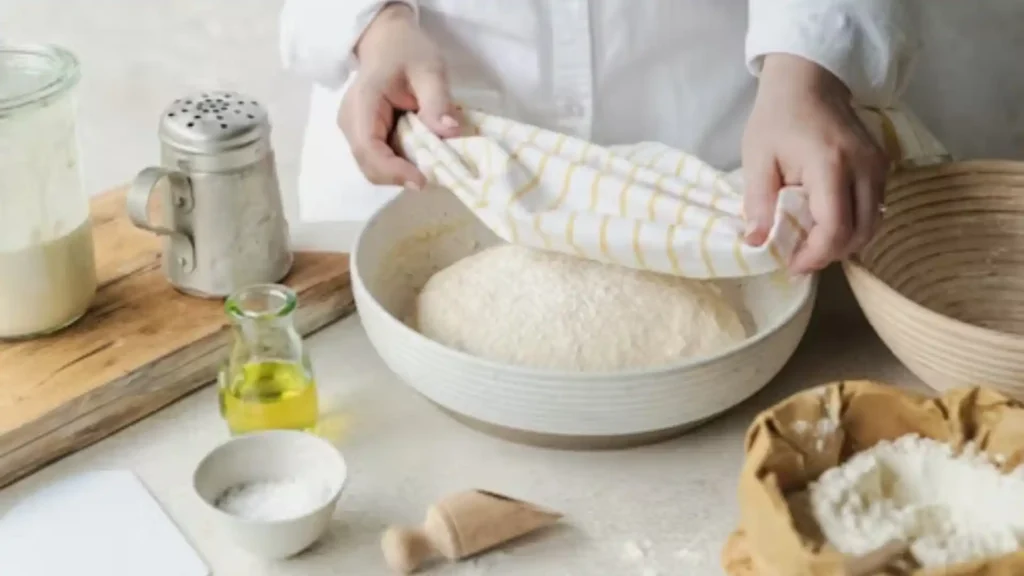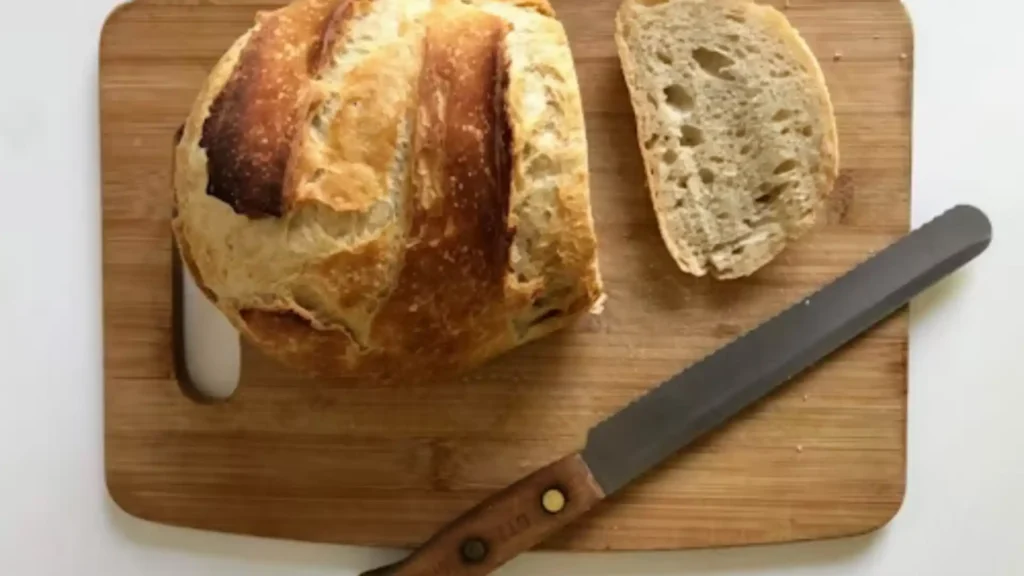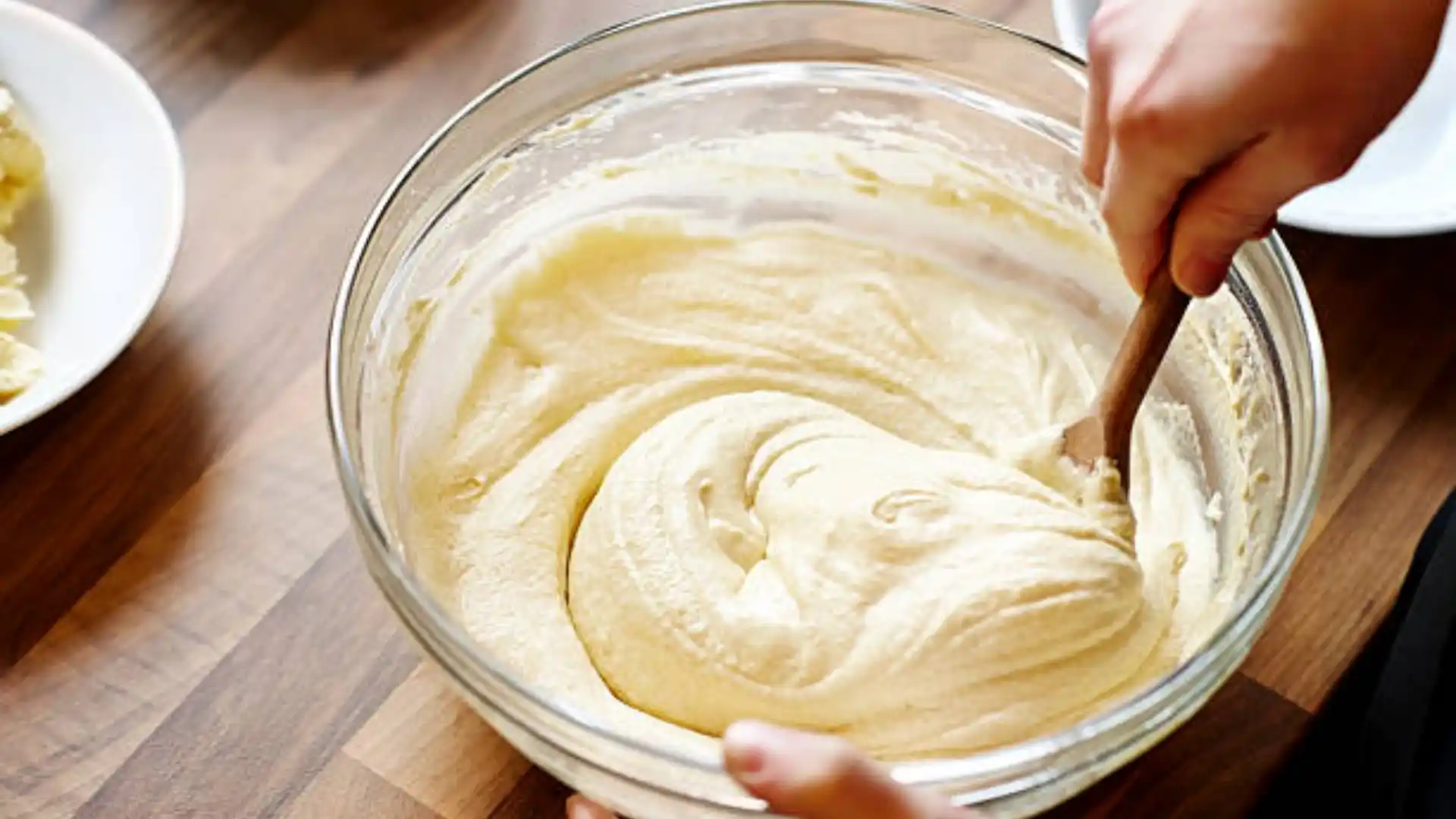Theres something magical about baking bread especially when its homemade nourishing and gluten free For those avoiding gluten due to sensitivities allergies or personal preference the idea of sourdough might feel out of reach But this easy gluten free sourdough bread recipe proves otherwise
Originating from the timeless traditions of European and Middle Eastern bread making sourdough has long been celebrated for its deep flavor and natural fermentation process In recent years gluten free versions have surged in popularity across the US and Europe not only for dietary needs but also for their wholesome artisanal appeal
Why is gluten free sourdough gaining fans everywhere Because it delivers what so many store bought options dont a crisp crust soft crumb and real taste Plus the fermentation helps improve digestion and enhances flavor even without gluten
My personal journey into gluten free sourdough began with a friends dietary restrictions I wanted to serve a bread that was more than just edible I wanted something that felt like the real deal After trial and error I found a method thats beginner friendly reliable and requires no special tools
This guide walks you through everything from starter to slice to help you create a gluten free sourdough loaf youll be proud of
Ingredients
Makes one medium sized loaf
- 3 cups 360g gluten free all purpose flour blend
Ensure it includes xanthan gum or use 1 tsp psyllium husk if not - 1¼ cups 300ml warm water around 85°F / 29°C
- ½ cup 100g active gluten free sourdough starter
- 1½ teaspoons fine sea salt
- 1 tablespoon olive oil or melted coconut oil optional for extra moisture
Substitutions & Dietary Variations:
- Vegan friendly: This recipe is naturally vegan no eggs or dairy required
- Low FODMAP: Use rice based flour blends and avoid high fiber flours like chickpea or sorghum.
- Nut free: Choose flour blends that do not contain almond or hazelnut flours
Ingredient Quality Tips:
- Opt for a high quality flour blend with a mix of rice potato and tapioca starches for the best texture
- Use filtered water to avoid chlorine which may weaken your starter
- Your starter should be bubbly and active fed 4 8 hours before mixing the dough
- For extra fiber and binding a teaspoon of psyllium husk or flaxseed meal can be added to the dry mix

Preparation Method Revised for Clarity & SEO
Total time: Around 6–8 hours mostly resting
Hands on time: About 30 minutes
Step 1: Get Ready
Start by feeding your gluten free sourdough starter a few hours in advance so its active and bubbly Warm your water slightly to about 85°F / 29°C and set out all ingredients
Step 2: Mix the Dough
In a large bowl stir the starter and warm water together Next add the flour blend and salt Mix well with a wooden spoon or spatula until everything comes together If youre using oil gently stir that in as well The dough will be sticky and thats normal
Step 3: Let It Rise Bulk Fermentation – 4–6 hours
Cover the bowl with a damp towel or plastic wrap Let the dough rest in a warm place for several hours You may gently stretch and fold the dough every hour during the first two hours to help with structure but this step is optional
Step 4: Shape & Proof Again
Once the dough has risen prepare a loaf pan by greasing or lining it Scoop the dough into the pan and smooth the top with a spatula After that let it rise again 1–2 hours until it looks puffier and slightly domed
Step 5: Bake
Preheat your oven to 425°F 220°C. For a crispier crust place a small pan of hot water in the oven to create steam Cover the loaf with foil and bake for 20 minutes Then remove the foil and bake for another 20–25 minutes until golden brown and firm
Step 6: Cool Completely
Finally transfer the loaf to a wire rack and let it cool for at least 1 hour This is an important step slicing too early can make the inside feel gummy

Tips & Variations
Flavor Boosters:
- Herbs & Spices: Try mixing in dried rosemary thyme garlic powder or Italian seasoning for a savory twist.
- Sweet Add Ins: Add a spoonful of honey a dash of cinnamon or some raisins to create a naturally sweet version
- Tangier Sourdough: Let your dough ferment longer up to 8 hours for a deeper sourdough flavor
Texture Upgrades:
- Better Crumb: Add 1 tablespoon of psyllium husk or ground flaxseed to improve moisture and structure
- Crispier Crust: After baking leave the loaf uncovered on a wire rack to cool completely Steam in the oven during the first half of baking helps too
Diet Friendly Adjustments:
- Vegan Option: This recipe is already dairy and egg free perfect for plant based diets.
- Nut Free: Simply use a flour blend that doesnt include nut flours
- Low FODMAP: Choose rice or potato based blends and avoid legumes or coconut flour
Serving Suggestions:
- Toast thick slices and top with avocado hummus or nut butter
- Use as sandwich bread for grilled cheese turkey melts or veggie stacks
- Pair with soups and salads especially creamy or roasted veggie based dishes
Nutrition Information Per Serving
| Nutrient | Approximate Amount |
|---|---|
| Calories | 160–180 kcal |
| Total Fat | 4g mostly healthy fats if using olive oil |
| Saturated Fat | 1g if using coconut oil slightly more |
| Carbohydrates | 30g |
| Dietary Fiber | 2–3g |
| Protein | 2–4g |
| Sugars | 1g |
| Sodium | 300–350mg |
| Iron | 4–6% DV varies by flour blend |
| Calcium | 1–2% DV |
| Magnesium | Trace amounts |
Note: Nutrition values will vary based on your chosen gluten free flour blend and optional add ins like oil seeds or sweeteners
Common Problems & Fixes
1. Bread Turns Out Dense or Gummy
- Cause: Too much moisture underbaked or inactive starter
- Fix: Bake the loaf longer especially the uncovered stage reduce the water slightly next time and ensure your starter is well fed and bubbly before using
2. Crust Is Too Soft or Pale
- Cause: Not enough heat or steam or the loaf was covered too long.
- Fix: Preheat the oven fully add a steam tray during baking, and uncover the loaf halfway through to let it brown
3. Loaf Collapses After Baking
- Cause: Overproofed dough or too much water
- Fix: Shorten proofing time next round especially if your kitchen is warm Reduce water by 2–3 tablespoons if your flour blend is very absorbent
4. Bread Crumbles When Sliced
- Cause: Cutting too early or not enough binding agent
- Fix: Let the loaf cool completely Add psyllium husk or flaxseed to strengthen the structure next time
5. Starter Isnt Active
- Cause: Cold temperature old flour or infrequent feedings
- Fix: Feed your starter regularly with fresh gluten free flour and warm water Keep it in a warm spot and use it at peak activity when it doubles in size
FAQ Frequently Asked Questions
Can I use any gluten free flour blend for this recipe?
Not all blends are the same For best results choose one that contains xanthan gum or psyllium husk If your blend doesnt include a binder you can add 1 tablespoon of psyllium husk manually
Can I skip the olive oil?
Yes The oil adds softness and moisture but the recipe works fine without it If you skip it expect a slightly firmer crumb
Can I prepare the dough the night before?
Absolutely After the bulk fermentation step refrigerate the dough overnight Let it come to room temperature then shape and proof before baking the next day
How should I store the bread?
Let the loaf cool completely then store it in a paper bag or wrap it in a kitchen towel at room temperature for up to 2 days. For longer storage slice and freeze in an airtight container or bag
Is this recipe safe for people with celiac disease?
Yes but only if youre using a gluten free starter and certified gluten free ingredients Be sure your workspace is free of cross contamination
Conclusion + Call to Action
Making your own gluten free sourdough bread doesnt have to be complicated With a few clean ingredients a little patience and this beginner friendly method you can enjoy a loaf thats crisp on the outside soft on the inside and full of tangy wholesome flavor without a trace of gluten
Whether youre baking for dietary needs or just exploring new ways to enjoy real bread at home this easy gluten free sourdough bread recipe is the perfect place to start
Give it a try and let us know how it turned out!
- Did you add herbs or make it plain?
- Was your crust crunchy or soft?
Drop your tips tweaks or questions in the comments we love hearing from fellow home bakers
More Sourdough Recipes Youll Love:
- Easy Recipes Using Sourdough Starter
- Sourdough Baguette Recipe (Easy)
- How to Cook Sourdough Bread Without a Dutch Oven
- Take-and-Bake Sourdough Bread Recipe
- Sourdough Bread and Cheese Pairing Ideas
- Can Sourdough Help With Cancer?
